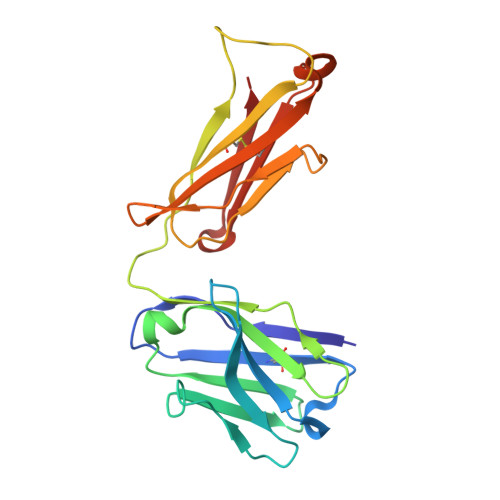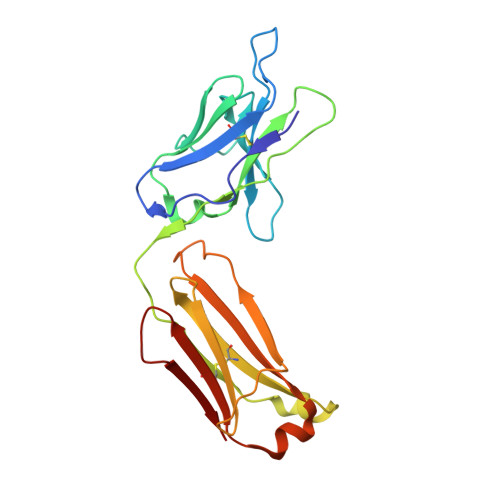Blue-fluorescent antibodies.
Simeonov, A., Matsushita, M., Juban, E.A., Thompson, E.H., Hoffman, T.Z., Beuscher IV, A.E., Taylor, M.J., Wirsching, P., Rettig, W., McCusker, J.K., Stevens, R.C., Millar, D.P., Schultz, P.G., Lerner, R.A., Janda, K.D.(2000) Science 290: 307-313
- PubMed: 11030644
- DOI: https://doi.org/10.1126/science.290.5490.307
- Primary Citation of Related Structures:
1FL3 - PubMed Abstract:
The forte of catalytic antibodies has resided in the control of the ground-state reaction coordinate. A principle and method are now described in which antibodies can direct the outcome of photophysical and photochemical events that take place on excited-state potential energy surfaces. The key component is a chemically reactive optical sensor that provides a direct report of the dynamic interplay between protein and ligand at the active site. To illustrate the concept, we used a trans-stilbene hapten to elicit a panel of monoclonal antibodies that displayed a range of fluorescent spectral behavior when bound to a trans-stilbene substrate. Several antibodies yielded a blue fluorescence indicative of an excited-state complex or "exciplex" between trans-stilbene and the antibody. The antibodies controlled the isomerization coordinate of trans-stilbene and dynamically coupled this manifold with an active-site residue. A step was taken toward the use of antibody-based photochemical sensors for diagnostic and clinical applications.
- Department of Chemistry, The Scripps Research Institute and the Skaggs Institute for Chemical Biology, 10550 North Torrey Pines Road, La Jolla, CA 92037, USA.
Organizational Affiliation:


















